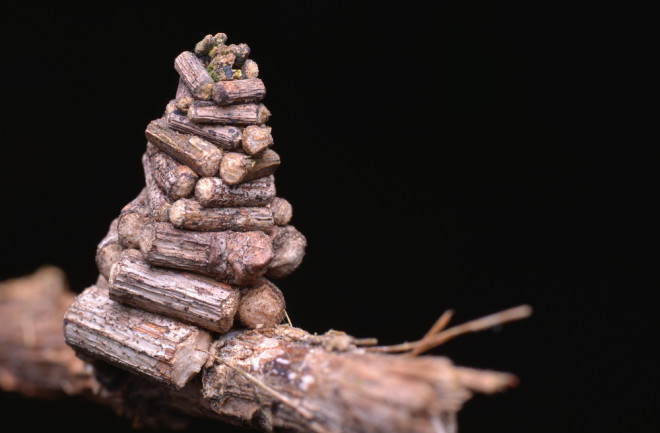Is that a cluster of miniature Lincoln Logs hanging off a branch? Not quite — what may look like a meticulous assortment of twigs is actually the home of a bagworm moth. These bug architects spend most of their short lives weaving homes out of plant debris.
As larvae, the silky worms find a place to settle down and feed, such as a leaf or the branch of a tree. Then, they crawl around and collect materials like twigs, dirt and dead leaves to add to their homes. The larvae can leave their houses to collect new materials until they’re adults — after that, male bagworms turn into moths, while females remain locked inside forever.
Stick Houses
The worms’ construction process isn’t random. A study of 42 nests from Clania crameri, a bagworm species native to India, showed that the design-savvy bugs use variations of short and long sticks to assemble their dwellings in a meticulous pattern. The larvae collect and assemble sticks of varying length and assemble them in a unique pattern, creating a house that spirals to a tip.
Fully-grown female bagworms remain curled up in their sacks for the rest of their lives. They build a space, mate and then essentially decay into a pile of eggs that will spawn the next generation of larvae. If you see an adult bagworm moth flying free, it’s a male – they appear fuzzy and black, with transparent wings.
All of this takes place within a few days to weeks. Adult female bagworms live only a few weeks, while their male counterparts have even less time – a male’s life span top out at one to two days.
And not everyone is in awe of the bagworm’s architectural savvy. To many botanists, the bugs are run-of-the-mill pests, known for attaching themselves to plants and stripping them bare of their leaves or needles. But to entomologists, the delicate homes of the bagworm are a marvel.

